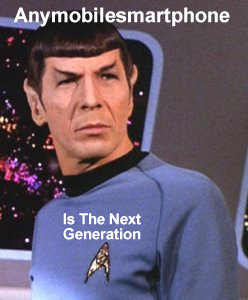 |
| We are the next generation of all smartphone's |
Chip makers like Qualcomm, Nvidia and Samsung Electronics are working on components that will increase processing power, add more memory and increase screen resolution of next-generation smartphones.
The year has only started and 2014's most exciting smartphones -- including successors to Apple's iPhone 5s, the HTC One and the Galaxy S4 -- still haven't been announced, but upcoming processors, memory modules and screens hint at what can be expected.
Here are some components that will help improve smartphone
The Snapdragon 800 processor dominated the high-end smartphone market last year, and powered products like the Nexus 5 from Google and LG Electronics, LG's own G2, the Galaxy Note 3 from Samsung and Sony's Xperia Z1. There is very little to suggest that the successor, the Snapdragon 805 won't be a popular option this year.
The Snapdragon 805 is based on the Krait 450 quad-core CPU, which runs at speeds of up to 2.5GHz per core, according to Qualcomm. It also features the new Adreno 420 GPU, which has up to 40 percent more graphics processing power than its predecessor. The extra horsepower will allow smartphones and tablets to display 4K video content, either on the device or a TV.
The first devices using the Snapdragon 805 are expected to arrive during the first half of the year. It's already rumored to power the Samsung Galaxy S5, Sony's Xperia Z2 and the Lumia 1820 from Nokia.
Nvidia's Tegra K1
Qualcomm may dominate, but Nvidia seems hell-bent on giving the company a run for its money with its Tegra K1 processor. Nvidia is hard at work on 32-bit and 64-bit versions that look very competitive.
The first version uses a quad-core processor based on the latest version of ARM's Cortex A15 CPU. It has four main processors running at up to 2.3GHz and a fifth power-optimized core to handle low performance tasks and help extend battery life, according to Nvidia. The second version uses a custom, Nvidia-designed 64-bit dual "Super Core" CPU running at up to 2.5GHz. It is based on the ARMv8 architecture, which introduces 64-bit support to the ARM world.
With the K1, Nvidia is putting an emphasis on improved gaming. The processors combined with a GPU based on Nvidia's Kepler architecture can outperform both the PlayStation 3 and the Xbox 360, according to Nvidia. The company has also implemented CUDA, a parallel computing platform and programming model that enables increased performance by taking better advantage of the GPU.
The 32-bit version is expected in devices in the first half of the year and the 64-bit version during the second half, according to Nvidia.
Samsung's 8GB LPDDR4 Mobile DRAM
While most expensive smartphones today have 2GB of RAM, Samsung's semiconductor unit has announced a new chip that will make it possible for the company and others to build mobile devices with up to 4GB of RAM.
The memory increase and performance improvement offered by the 8-gigabit LPDDR4 (low power double data rate) mobile DRAM will result in faster, more responsive applications and will open the door for more advanced features as well as displays with higher resolutions, according to Samsung. The product also consumes less power than current memory chipsets, it said.
The chip will start shipping this year for use in large-screen smartphones, tablets and ultra-slim notebooks, according to Samsung. While 4GB will be possible, it's more likely that new high-end smartphones will instead get a more modest upgrade to 3GB.
Samsung also offers eMMC (embedded MultiMediaCard) memory to increase integrated storage to 128GB. That has been possible for some time, but vendors don't seem very interested.
LG Display's 2560 by 1440 pixel screen
Larger screens with higher resolutions have been one of the biggest smartphone trends in the last couple of years, and that shows few signs of abating. For example, LG Electronics' Display unit has developed a 5.5-inch screen for next generation smartphones with a 2560 by 1440 pixel resolution.
That combination equals a density of 538 ppi (pixels-per-inch). Current smartphones like the HTC One has 468 ppi on a 4.7-inch screen and the Samsung's Galaxy S4 has 441 ppi on a 5-inch screen.
The higher resolution allows users to see a full view of a PC-version Web page without any image distortion, according to LG. As is often the case, LG doesn't seem to be alone among the major smartphone makers working on screens with this resolution -- Samsung and Sony are rumored to be doing the same.
STMicroelectronics' 9-Axis movement and position sensor
Today's smartphones aren't just about raw performance. They also have a multitude of different sensors to help with navigation, for example.
STMicroelectronics has announced a new 9-axis movement and position sensor, which combines a 3-axis accelerometer, a 3-axis gyroscope and a 3-axis magnetometer. Its improved performance can be used to enhance features such as gesture controls, indoor navigation, and augmented reality, the company said.
The sensor measures 3.5 by 3 millimeters, which is almost 35 percent smaller than previous generations. It also uses less power than previous models. In addition to smartphones, it can be used in remote controls, game controllers, and sports or medical wearables, STM said.
The company is shipping small volumes of the sensor, but isn't saying when it will show up in smartphones.
Posted by www.anymobilesmartphone.co.uk








